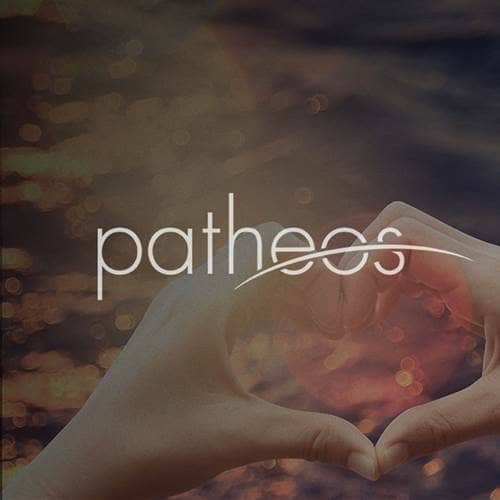- Trending:
- Pope Leo Xiv
- |
- Israel
- |
- Trump
- |
- Social Justice
- |
- Peace
- |
- Love

RELIGION LIBRARY
Protestantism
Historical Perspectives
Until fairly recently, much of the history of Protestant churches has been written with an eye toward defending Protestant beliefs against Roman Catholicism, as well as defending each Protestant denomination against the others. These histories tend to reflect at least as much about the writers as they do about the historical subjects. Seventeenth-century authors see Luther, Zwingli, and Calvin and others as primarily concerned with correct doctrine. Eighteenth-century authors see them as rationalists. Nineteenth-century authors see them as concerned with the quality of the internal life of faith. All these are partially correct, though all in their emphases tend to distort history to some extent.
There have been at least three interesting movements in more recent scholarship about the Reformation. Led by David Steinmetz and Heiko Oberman, scholars have focused on the medieval contexts in which the Reformers worked. The result has been a move away from the traditional view that the Reformers made a sharp break with medieval thought and culture, and toward the view that they are best understood as part of that culture. B.A. Gerrish has argued persuasively that Luther ought not be confused with Lutherans, and Calvin ought not be confused with Calvinists (especially on the centrality of predestination in his thought, which had long been assumed to form Calvin's centerpiece).
More recently, scholarship that is focused less on theological interests and more on wider historical questions has emerged. In particular there has been a great emphasis on social history. These scholars tend to see the work of Steinmetz and Oberman, while an important corrective in intellectual history, as still overly focused on the history of ideas rather than the history of people of all social classes. The data for this research were largely provided by the reformers themselves, who made the first real effort to find out what people in villages across Europe actually believed and how they practiced Christianity. Because for the reformers salvation is by faith alone, they set out to discern what and how people believed. They set up annual visitations in which representatives of the churches would interview lay people and clergy on what they believed and on their moral lives. The detailed records from these interviews, largely overlooked in archives until recently, have become a great object of interest. Natalie Zemon Davis has been a pioneer in this endeavor. Other prominent historians include Robert Scribner, C. Scott Dixon, Susan Karant-Nunn, and Lorna Jane Abray.
Finally, the issue of iconoclasm (that is, stripping the churches of visual images), motivated largely by a desire to remove distractions from and potential contradictions to the clear preaching and teaching of the word (that is, the Bible), has been the subject of recent interesting historical work. It was a common practice in areas of Europe that became Protestant (especially Reformed areas) to remove paintings and statues from churches, and sometimes even to whitewash the walls. Eamon Duffy's 1992 book, The Stripping of the Altars: Traditional Religion in England, 1400-1580 argues that Catholicism in medieval England was not in decline prior to the Reformation but was quite robust, and that certain forms of piety were lost with a change in religious practice and religious space. Peter Matheson (The Imaginative World of the Reformation, 2000) has argued that the Reformation can be understood as a change in aesthetics (so, not a stripping but a shift), one that has shaped modern aesthetics and modern ways of thinking about the relationship of the human and the divine. One important effect of this shift is the privileging in the modern world on aural forms of knowing and disseminating knowledge over forms of knowing derived from other senses that had been more prominent in the Middle Ages.
Until the last third of the 20th century most scholarship on Protestantism, even relatively academic and non-partisan work, tended to focus on founders and later important historical figures, and tended to be written, however subtly, as an apology (defense) of one of the major denominations. In other words, in nuanced ways, it recapitulated doctrinal debates of the 16th through the 18th centuries. This tendency has shifted in the intervening decades in at least three important ways.
First, rather than focusing on clearly marking the boundaries between historical traditions, recent work has focused on their mutual influence and overlap. The tone for this work was set by the ecumenical movement, which took its cue in turn from Roman Catholicism's Second Vatican Council and the decision made there to open theological conversations with the traditions that had broken away from Catholicism. Examples of this kind of scholarship include George Lindbeck's 1985 The Nature of Doctrine, Heiko Oberman's The Dawn of the Reformation (1992), and Tuomo Mannermaa's Christ Present in Faith (2005). Analogous work showing the relationships between Methodism and the various holiness movements that developed out of it in the United States can be seen in Vincent Synan's 2001 The Century of the Holy Spirit. Earlier work on Methodism had been concerned to draw sharp distinctions between the "respectable" mainline denomination and its more "embarrassing" offspring.
Second, there has been an effort to connect the history of individual denominations, and of Protestantism as a whole, to wider social movements. David Hempton's Methodism: Empire of the Spirit (2005) considers the growth and decline of Methodism in relationship to industrialization, urbanization, and modernization. Interest in the relationship of Calvinism and capitalism remains strong, as for example in Philip Gorski's The Disciplinary Revolution: Calvinism and the Growth of State Power in Early Modern Europe (2003). Attention has also turned in recent decades to the role of women in the history of Protestantism (for example Jean Miller Schmidt's Grace Sufficient: A History of Women in American Methodism, 1999), and to the role of other groups that earlier scholarship had ignored or pushed to the margins (for example, Anthony B. Pinn's The African American Religious Experience in America (2006).
Finally, for most of the 19th and 20th centuries, academics assumed that the world was secularizing (becoming less religious), and that this process was a zero sum game between modernity and all religions, including Protestantism. More recent work has shown that the world is not, in fact, becoming less religious, though the shape and place of religion continues to shift. Furthermore, scholars now argue increasingly that Protestantism, far from being a bulwark against secularism, is one of the major factors in producing secularism. Protestantism, with its focus on individual piety and its relationship to the state and to science—so different from Catholicism's—has helped create a world in which religion is voluntary; the flip side of making individual choice or individual accepting of grace the sine qua non of religion, is that individuals develop the ability to choose among religions, or choose no religion at all. Most important here are José Casanova's Public Religions in the Modern World (1994), Talal Asad's Formations of the Secular (2003), and Charles Taylor's A Secular Age (2007).
Study Questions:
1. What has recent scholarship offered to Protestantism?
2. What is iconoclasm? What were its effects?
3. How have social movements influenced Protestantism throughout time?
4. How has Protestantism changed the contemporary world? Explain.










